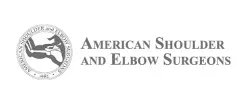The study retrospectively reviewed 2573 shoulders undergoing primary reverse total shoulder arthroplasty (rTSA) and compared the proportion of patients achieving the minimal clinically important difference (MCID) and the percentage maximal possible improvement (%MPI) for various outcome scores, finding score-specific estimates of the minimal clinically important %MPI (MCI-%MPI) and highlighting that the previously established 30% threshold for %MPI may not uniformly represent patient improvement after surgery, urging surgeons to use score-specific estimates when assessing success in patients undergoing primary rTSA.
Background: In high functioning patients, the ceiling effect associated with many patient-reported outcome measures (PROMs) limits the ability to appropriately stratify success. The percentage maximal possible improvement (%MPI) was introduced as another evaluation tool, with a proposed threshold of success at 30%. It remains unclear if this threshold correlates with perceived patient success following shoulder arthroplasty. The purpose of this study was to compare the proportion of patients that achieved the minimal clinically important difference (MCID) and %MPI for different outcome scores and to define the %MPI thresholds associated with patient satisfaction following primary reverse total shoulder arthroplasty (rTSA).
Methods: A retrospective review was performed of an international shoulder arthroplasty database between 2003 and 2020. All primary rTSAs performed using a single implant system with minimum 2-year follow-up were reviewed. Pre- and postoperative outcome scores were evaluated for all patients to determine the raw improvement and %MPI. The proportion of patients achieving the MCID and 30% MPI were determined for each outcome score. Thresholds for the minimal clinically important %MPI (MCI-%MPI) were calculated using an anchor-based method for each outcome score and stratified by age and sex.
Results: A total of 2573 shoulders with a mean follow-up of 47 months were included. Outcome scores with known ceiling effects (Simple Shoulder Test [SST], Shoulder Pain and Disability Index [SPADI], University of California-Los Angeles shoulder score [UCLA]) had higher rates of patients achieving the 30% MPI but not the previously reported MCID. Inversely, outcome scores without significant ceiling effects (Constant and Shoulder Arthroplasty Smart [SAS] scores) had higher rates of patients achieving the MCID, but not the 30% MPI. The MCI-%MPI differed among outcome scores and mean values were as follows: 33% for the SST, 27% for the Constant score, 35% for the American Shoulder and Elbow Surgeons Standardized Shoulder Assessment Form (ASES) score, 43% for the UCLA score, 34% for the SPADI score, and 30% for the SAS score. The MCI-%MPI increased with greater age for SPADI (P < .04) and SAS (P < .01) scores, meaning that patients with higher thresholds required a greater fraction of the possible improvement for a given score to be satisfied but did not reach statistical significance for other scores. Females had a greater MCI-%MPI for the SAS and ASES scores and a lower MCI-MPI% for the SPADI score.
Conclusion: The %MPI offers a simple method to quickly assess improvements across patient outcome scores. However, the %MPI that represents patient improvement after surgery is not uniformly the previously established 30% threshold. Surgeons should use score-specific estimates of the MCI-%MPI to gauge success when evaluating patients undergoing primary rTSA.
Learn more about Dr. Moby Parsons, here.
Find out what our past patients are saying, here.















